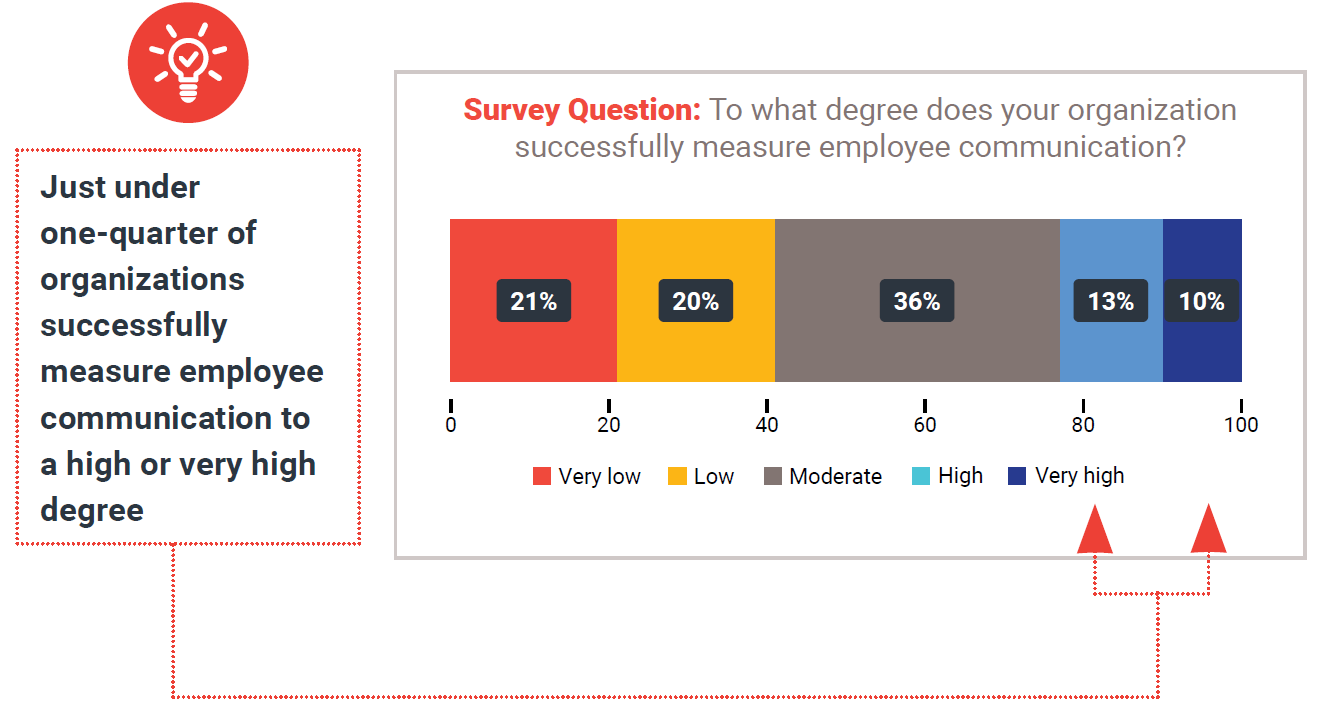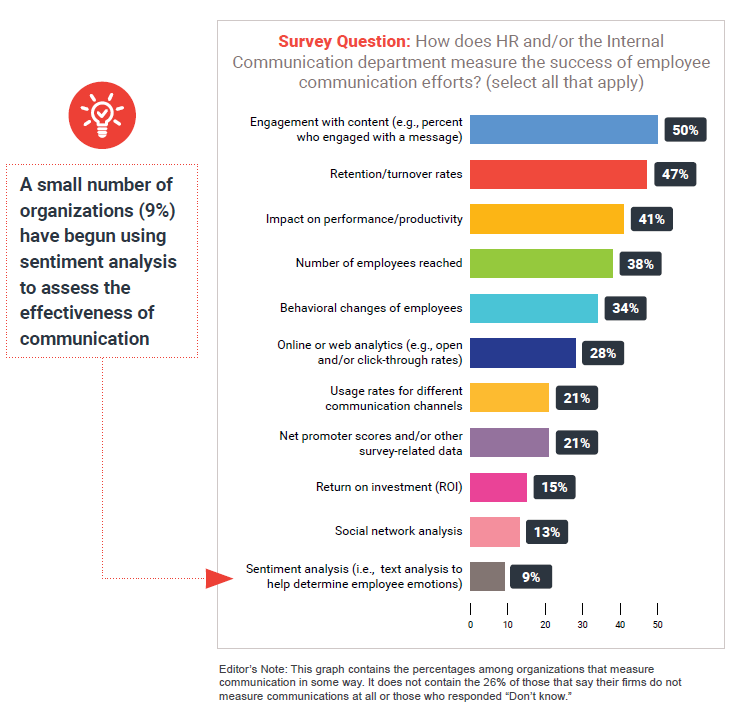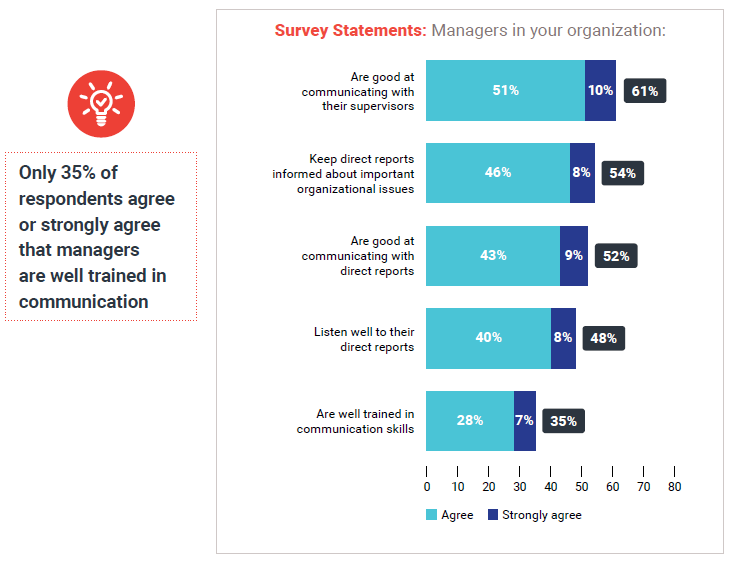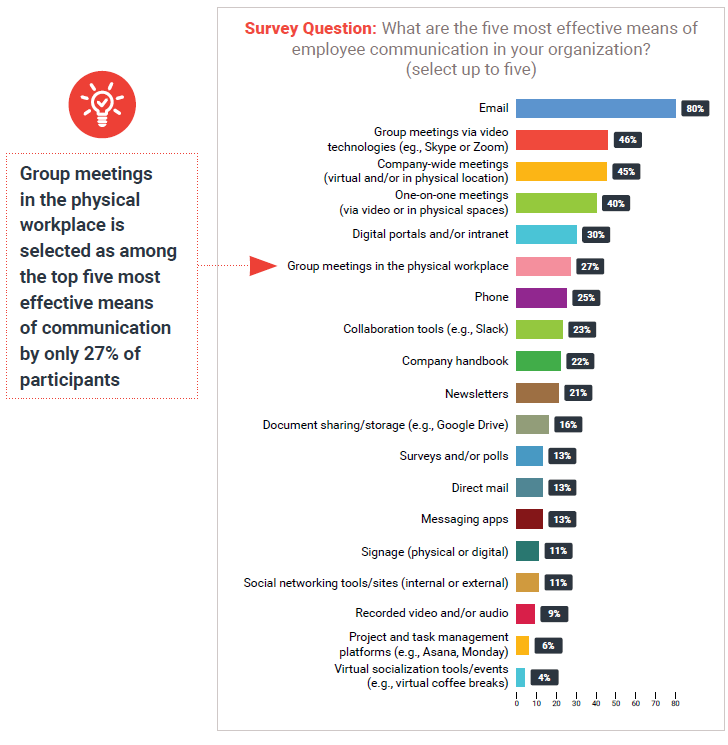
Most organizations do not measure employee communications well
Despite the importance of employee communications, most organizations do not do a good job of measuring it. When 52% of organizations say employee communication is extremely important, then you would expect many would measure it to a very high degree. In fact, only 10% of organizations do. In addition, only 13% of organizations even measure it to a high degree. That leaves a majority of organizations, 77%, measuring communication to a very low, low, or moderate degree.
We find the lack of successful measurement somewhat puzzling. Why haven’t organizations done more to determine their success in this area? Another factor is that there are simply more ways of measuring communication than ever before due to changes in technology. Of course, these same technological changes can also make communications more complex, which may be a factor in the lack of measurement success.
By organizational size
Organization size has a considerable impact on whether communication is measured. Only 13% of small organizations measure communication. This goes up to 18% in mid-sized organizations and jumps to 38% in large organizations.
The most commonly used metric of communication success is the percent of employees who engage with the message
One reason organizations do not measure employee communication well is that they do not even try to measure it. In fact, 26% of respondents indicate “we do not measure it.”
Among those that do measure it, however, perhaps the most direct way of doing so is to measure engagement with the content (e.g., percent who opened a message or clicked on a link). Still, only 50% of organizations that measure employee communications use this method. Perhaps some organizations are not aware of how to measure message engagement or do not heavily rely on the associated digital technologies for which one can measure it.
Among the other most cited metrics are the gauging of retention/ turnover, impact on performance/productivity, and behavioral changes of employees. However, since these outcomes are impacted by many factors, they do not usually give a clear indication of the success of communication.
Sentiment analysis—which could, for example, look at social media and employee survey comments related to communication—is a promising technology but only 9% of respondents use it.
Managers are somewhat better at communicating upwards than downwards
Most respondents (61%) agree or strongly agree that managers are good at communicating with their supervisors. This is somewhat higher than the 52% who agree or strongly agree that managers are good at communicating with their direct reports.
Despite the importance of communication, it does not appear to rank high in training priorities. Only 35% of respondents agree or strongly agree that managers are well trained in communication skills. This is another area where the level of perceived importance is not reflected by the degree to which practices such as training are used.
Email is, by far, most likely to be cited as an effective means of employee communication
These days, there are a great many ways an organization can communicate to employees. Of these methods, the clear winner is email, identified as among the top five methods by 80% of respondents. Group meetings via video technologies comes in a distant second at 46% percent.
It is impossible to know the exact degree to which the Covid-19 pandemic and the associated high usage of remote work arrangements have affected the usage of these communication technologies, but all of the top five means of communication are electronically mediated, often with the option of video technologies. “Group meetings in the physical workplace,” which might have made the top five before the pandemic, is selected by only 27% of respondents.
Of course, one of the implications of these data is that HR as well as communicators should be skilled at using many different modes of communication and know which mode, or which combination of modes, is most suited for the message and the audience.



